Okra is usually grown at places where the crop will get full sunlight throughout the day. Soil varieties may vary for Okra production, loam and sandy loam are preferred, but even heavier soil can produce well if the soil drains well enough to prevent waterlogging. If soil drainage is below the best, the Okra will benefit from the use of raised beds. Let’s check out how to prepare soil for Okra plants below.
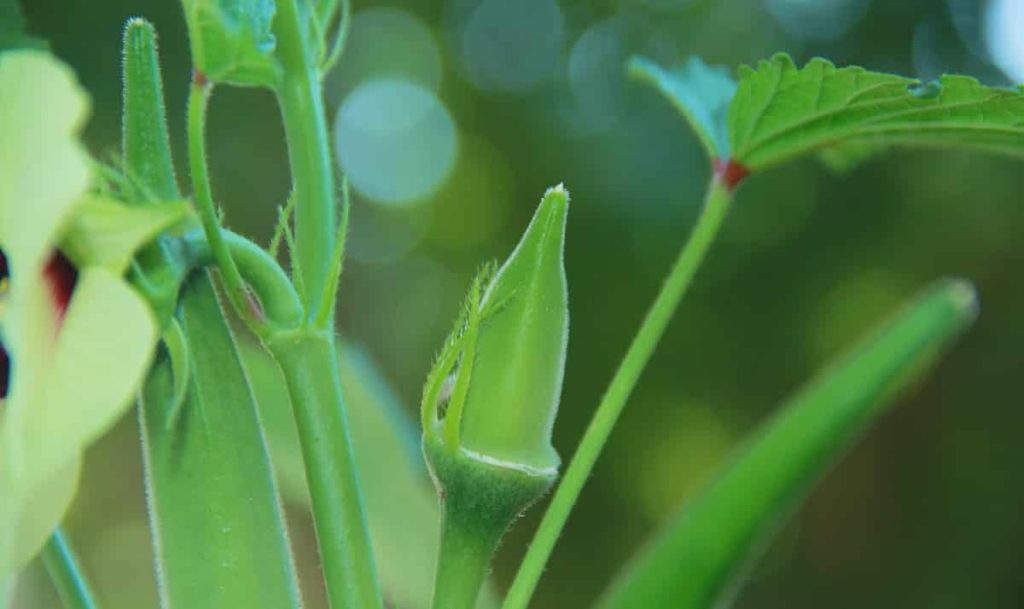
Like most vegetable crops, Okra will produce more if supplementary irrigation is available in drought conditions. Do not cultivate crops in alkaline, saline soils with poor drainage capacity. Root-knot nematodes can be a problem, and producers should rotate Okra fields into non-host crop varieties such as annual grass or cereal grains to reduce the chances of growth in the nematode population.
How to prepare soil for Okra plants
Soil pH for Okra
The Okra plant grows best in soil with pH levels between 6.5 to 7. You can get your soil tested or check the soil quality at home. If you prefer not to change your soil’s pH level, add compost material to your soil to make it nutritious. Okra grows well in soil that is rich in nutrients. You can enrich your soil by adding compost material. The Okra needs full sun and grows best in the soil with a pH close to neutral, 7.0.
Okra also has moderate nutritional needs, so do not go over the fertilizer. To check soil pH and fertility, test results will give you an idea of what modifications should be added to the soil. You can reduce soil pH levels by adding nitrogen with organic mulch, iron sulfate, sphagnum peat, and elemental sulfur to the soil. If your soil pH is 7.5, you can reduce it to 6.5 by working 1/5 pounds of elemental sulfur in 10 square feet of garden area, which is acceptable for growing Okra.
If the soil is more than pH 7.5, it is more difficult to reduce it as it can contain large amounts of calcium carbonate, which resists pH changes. Raise the pH of the soil by adding ground limestone with soil. The amount of add depends on the nature of the soil. If your soil pH is 5, add 3.6 kg of ground limestone on 100 square feet of sandy loam, 4.5 kg in the loam, and 6.8 kg in the clay loam.
In case you missed it: Okra Plant Growing Stages: Flowering, Fruiting in Pots/Containers at Home

If your soil pH is 5.5, add 2.7 kg of ground limestone on 100 square feet of sandy loam, 3.6 kg in the loam, and 4.5 kg in the clay loam. Loam is soil that contains almost equal amounts of sand, silt, and clay. Sandy loam contains more than a third of the sand. Clay loam contains a large amount of clay.
Preparation of soil for growing Okra in pots
Choose a soilless potting mix rich in organic matter. You can also add lots of compost or aged manure to provide your Okra plant with a steady supply of nutrients. Make sure you use potting soil, not use topsoil or garden soil. The potting soil is light and loose, and the soil above will pack down, interfering with drainage and root development.
Okra works best with a soilless potting mix filled with organic matter and phosphorus-rich manure. You can also compost the soil for the rest of your plant’s life. Try composting your vegetable scraps on top for extra doses of nutrients.
Preparation of soil for growing Okra on grounds
You can get your soil tested or check the soil quality at home. Okra plants grow in the normal soil of the garden. But they will grow best and produce more in well-drained, fertile, and loam soil. Prepare the soil by mixing organic fertilizers before planting or transplanting seeds. You can use aged manure, compost, or bagged organic fertilizer. Add 0.9 to 1.3 kg of fertilizer for every 100 square feet of garden space.
In case you missed it: Best Fertilizer for Okra: Homemade, Liquid, Organic, Compost Manure, NPK, and Schedule
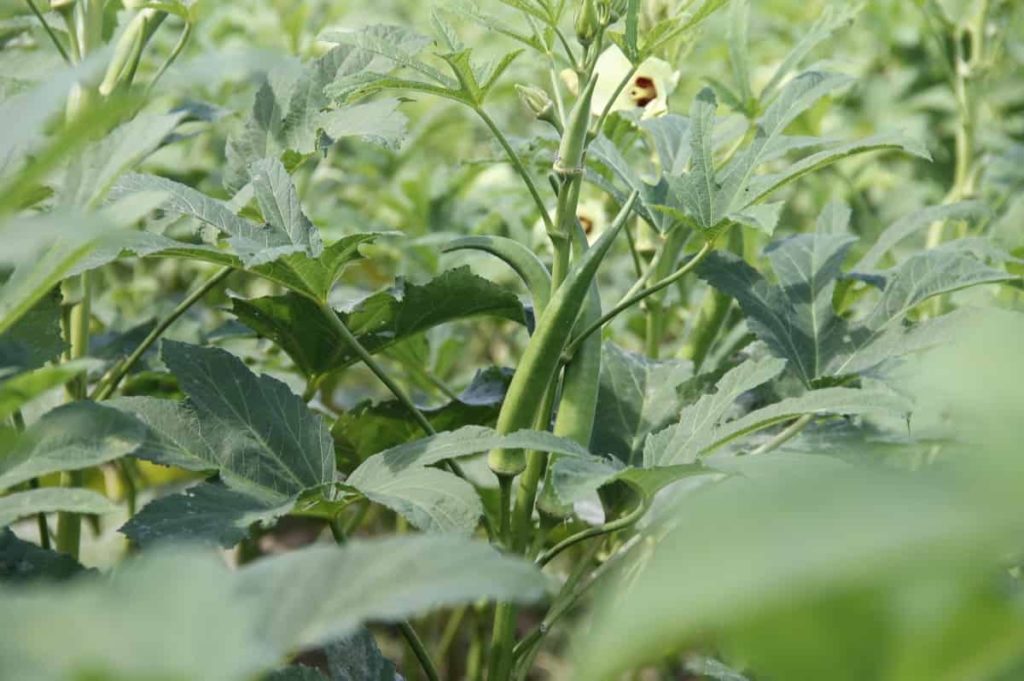
When you prepare your garden area to plant Okra. Work the fertilizer in the ground at about 3 to 5 inches. It will give your growing Okra the most opportunity to absorb nutrients. Okra is sown on ridges or flat soil. If the soil is heavy, sowing should be done on the ridges. The use of organic manures like neem cake and chicken manure improves plant growth and production in this crop. It is possible to reduce the fertilizer using neem cake and chicken manure.
The Okra plant has a sensitive balance between vegetation (production of leaves) and reproduction (production of pods). You should avoid using excess nitrogen from vigorous plantation until the fruits start checking plant growth. However, more analysis in terms of rainfall may require two or more side dressings with nitrogen content. The supply of additional nitrogen at the end of the season is essential when blooms are concentrated on top of the plant.
How to grow Okra in poor soil
Okra grows best in rich soil, which is loose and drained well. Plants also need full sun, especially in cold climates. While sandy, light soil is ideal for Okra, you should modify it with organic matter to increase nutrition and water retention. You can also grow Okra in heavy, clay soil, but it will also need to be modified with organic matter to help lighten the soil while providing more nutrients and yielding more.
Soil composting for Okra
Before planting, you will need to modify the garden soil. Organic matter is dead or dissolved remains of living things. Examples include manure, dried leaves, and dry manure. Organic matter is crucial for organic gardening; it provides food for plants and microorganisms. Organic matter is a major nitrogen source and provides plants with more than essential nutrients and micronutrients. If you have heavy clay soil in the garden, add gypsum.
All is mixed well; wait at least a week in the water before planting. It is also important to include an organic source of phosphorus when adding organic matter. Plants use phosphorus for flowers, fruits, and set seeds. Adding phosphorus, potassium, and trace minerals before adding nitrogen fertilizer can make plants strong root systems, increasing their stiffness and production.
In case you missed it: Okra Planting Frequently Asked Questions (FAQs)
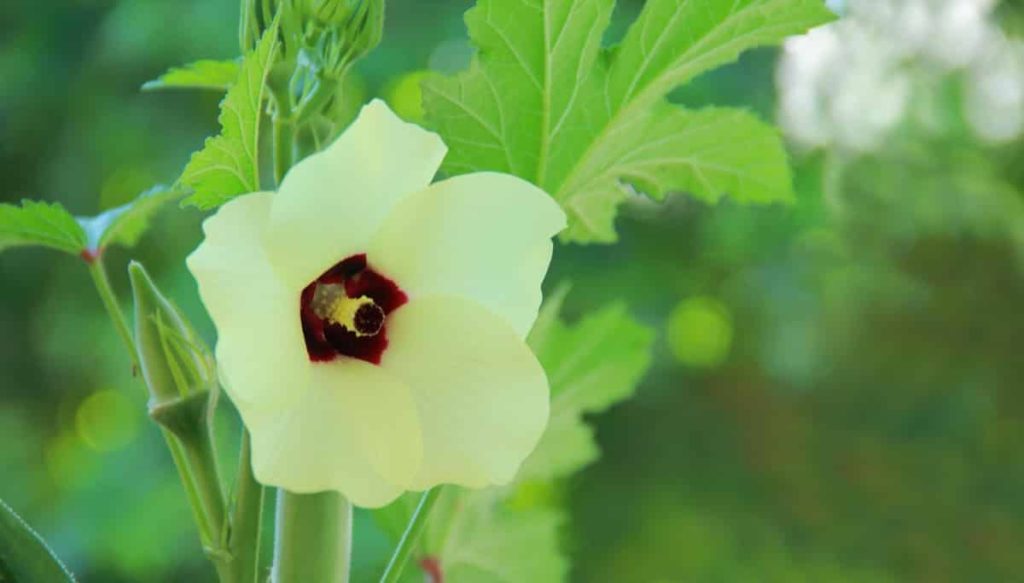
Land preparation for Okra
Preparation of the ground is an important step in growing a good crop. Turning the soil in the fall or early spring will allow crop residue to decompose before planting. The preparation of land also allows the germination of many weed seeds. These seedlings should be killed when you disk the soil before planting. The land is prepared by plowing 5 to 6 deep and plowing by two or three planking. Apply well-decomposed cow dung 100 quintals per acre in the soil at the last plowing.
Sometimes the Okra is also sown on the border of the main crop, and the layout is equal to the main crop. Proper distance is most important for successfully growing Okra. Plants are quite tall, and branches come out without proper space, impeding nearby plants. You should plant Okra seeds 1 inch deep and 6 to 8 inches apart. The thin seedling or plant transplant takes place in rows at a distance of 18 to 24 inches which is 3 feet apart.
Best soil mix for Okra
A good, easy option is a mixture of potting soil, one part of the coco peat, and one part of vermicompost. Soil and vermicompost provide your plant with nutrients, while the coco peat mix maintains moisture. Make sure your soil combination enables water to extract faster from it. Loam soils, which are rich in organic compost and contain a good mix of sand and silt, are perfect for Okra, as it is nutritious for the plant and allows for plenty of air and water flow.
In case you missed it: Okra Growing Tips, Ideas, Secrets, and Techniques
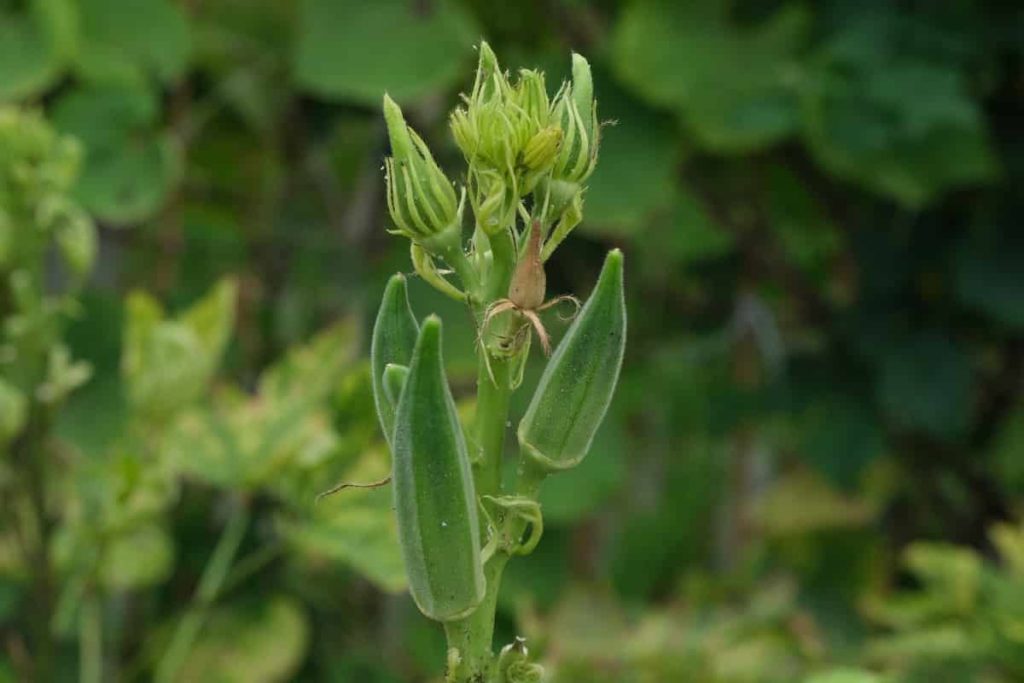
Soil recipe for Okra
Fill the container with a regular commercial potting mix that includes ingredients like peat and vermiculite. Mix a small handful of any general-purpose into a potting mix before planting. You can also prepare potting mix with 60% loamy soil, 25% organic compost, 10% coco peat, and 5% sand.
Natural soil amendments for Okra
You can spread or work in used coffee grounds directly on the garden soil. If applied, keep the field moist to attract beneficial microbes that break the field and contribute nitrogen to the soil. When mixed with carbon sources, such as leaves or chopped paper, they make nutritious materials to complement the Okra soil. Coffee grounds are also the preferred diet of worms used in vermiculture. Worm casting and worm compost are rich sources of nutrients, especially in organic gardens.
Since Okra plants prefer well-drained, sandy loam soil, dense clay soil can present an important challenge. You can improve the soil problems with organic amendments, including manure or fresh coffee grounds. Their combination of manure, shredded paper, chopped leaves, grass clippings, and chopped pine bark or soil conditioner can improve soil drainage and facilitate the Okra root aeration compared to unimproved clay soil.
What to do with soil after growing Okra
Okra is very sensitive to nematodes, and the nematode population may boom up at the end of the season. Avoid growing Squash, Sweet potato, or solanaceous crops (such as Tomatoes, Peppers, and Eggplant) after Okra as they may be affected by nematodes from last year. Squash and Sweet potato can increase the number of nematodes in your garden. Grow other fellow crops that reduce the number of nematodes in your garden before planting Okra.
Marigolds are a good choice. Root-knot nematodes like the same conditions as Okra plants: full sun and warm weather. They can spread in the same conditions and make it so that it is more difficult for Okra plants to absorb nutrients, which not only eliminates the nutrient plant but also makes the crop more difficult or impossible.
Ground covering plants like Melons and Cucumbers are perfect for preventing the growth of foods that can eliminate nutrients from your Okra. Planting Cucumber and Melon saplings also add extra pollination power to your garden as Okra flowers grow before fruit production. When your Okra is still maturing, Lettuce, Spinach, and Peas are all fast-producing plants that can be harvested.
For this reason, the cucurbits prefer to live with tall plants in the garden, the Lettuce, Spinach, and Peas; they enjoy living under the Okra plant and the taste in the shade it provides. More specifically, Peas enjoy cool weather, so plant them with Okra in the early stages before the pods mature enough for the crop. When their life cycle is over for the season, cut the greens and let the decayed substance fertilize your vegetable growth.
In case you missed it: Okra Seed Germination, Time, Temperature, Light
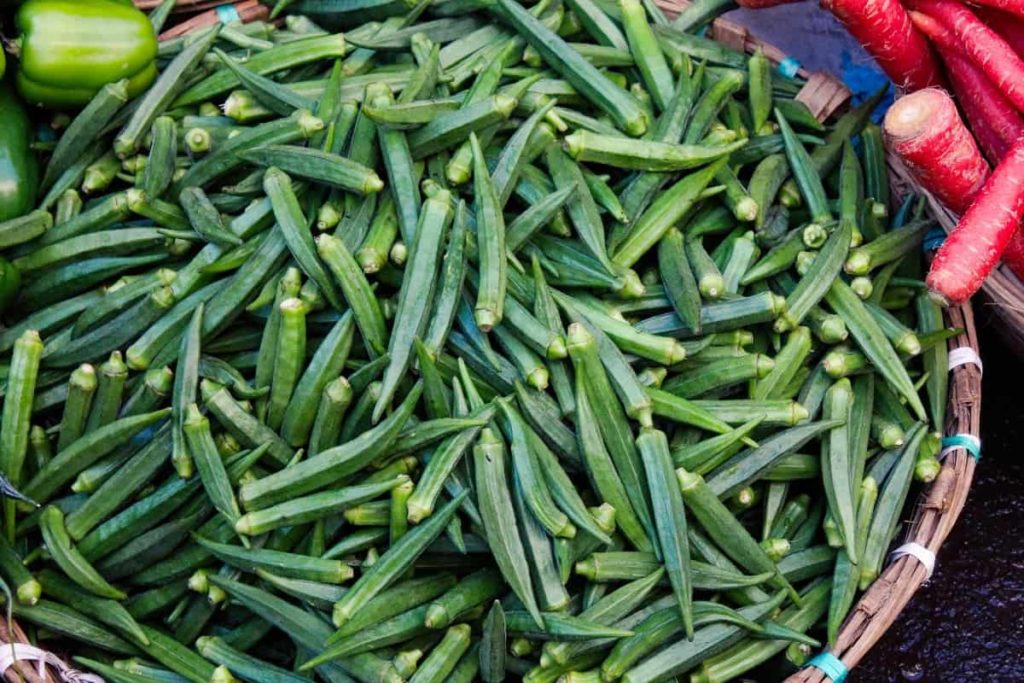
The Lettuce does not have a vast underground system because its roots are not so deep. So, they won’t crowd out other companions you plant on with your Okra. Know that the Lettuce and Greens need extra water for crispness and taste, so gardening with them will require extra care in this area. Peppers like Bell pepper or Jalapenos are very good vegetables for Okra.
Peppers reduce cabbage worms near companions, and the Okra is too long to protect the more delicate Pepper plant from strong winds. You can plant Peppers between Okra plants in spring or early summer. Eggplant and Tomatoes are other summer plants you can plant with your Okra. Expect an extra boost if planted with Sunflowers, as Sunflowers enjoy sharing soil with both plants. Eggplant likes shade and is smaller than Tomatoes.
Eggplants also increase the amount of potassium in soil that Okra likes. When you water your Eggplant, it releases nutrients into the soil, fertilizing the Okra crops. Both are great for stopping stink bugs and providing trap crops. Other cold-weather crops like Radish enjoy the benefits of being close to the Okra crop.
- How to Grow Tomatoes Organically at Home: A Comprehensive Guide
- Organic Gardening on a Budget: Low-Cost Methods and Materials
- Gongura Seed Germination and Planting Methods
- Cabbage Seed Germination and Selection
- Broccoli Seed Germination and Selection
- Asparagus Seed Germination and Variety Selection
- Seasonal Flower Gardening: Best Practices for Spring, Summer, Fall, and Winter
- How to Grow Hibiscus from Flower
- Plantation Ideas for Home Decoration: A Beginners Guide
- Flower Garden Designs and Layouts for Beginners
- Planting and Spacing Techniques in Papaya: A Beginner’s Guide
- Growing Gold: Essential Techniques for Planting Pineapples
- How to Make Kalanchoe Plant Bushy: Home Remedies and Solutions
- 11 Reasons Why Your Gardenia is Not Blooming: Home Remedies and Solutions
- Eco Elegance: The Guide to Designing a Drought-Tolerant Landscape
- Gardening on a Slope: Strategies for Hillside Landscaping
- Nourish and Flourish: Top Organic Mulches for Thriving House Plants
- Everything You Want to Know about Indian Mogra Flower: Discover Uses and Growing
- Green Thumb Success: Expert Tips for Cultivating Greenhouse Pumpkins All Year Round
- Maximize Growth & Flavor: The Ultimate Guide to Companion Planting in Herb Gardens
- How to Control Rhododendron Problems Naturally: Home Remedies and Organic Ways to Fix Them
- Natural Magic: The Remarkable Benefits of Cinnamon for Plants
- Best Steps to Revive Dying Tulip with Natural and Organic Treatment
- 10 Reasons Why Your Angel Trumpet is Not Blooming: Remedies and Treatment
- How to Fix Periwinkle Leaf and Flower-Related Problems: Natural Remedies and Solutions
- How to Fix Zinnias Leaf and Flower Problems: Discover Natural and Home Remedies
- Organic Steps to Induce Lemon Tree Flowers: A Comprehensive Guide
- Bloom Booster: Crafting the Perfect Homemade Bougainvillea Fertilizer
- Optimizing Growth: A Guide to Applying NPK Fertilizer for Potted Plants
- 10 Best Homemade Fertilizers for Rubber Plant: DIY Recipes and Application Method
- How to Boost Female Pumpkin Flowers: Effective Steps for More Flowers and High Yields
- Transform Your Indoor Garden: Top Benefits of Pink Salt for Houseplants
- 10 Best Homemade Fertilizers for Peacock Plants (Calathea): Easy DIY Guide
- Unlock Blooms: 9 Reasons Why Your Potted Chrysanthemum is Not Blooming
- 8 Reasons Why Your Potted Hibiscus is Not Blooming: Fix it with Simple Solutions
- Unlock Blooms: 9 Key Reasons Your Potted Frangipani Won’t Flower